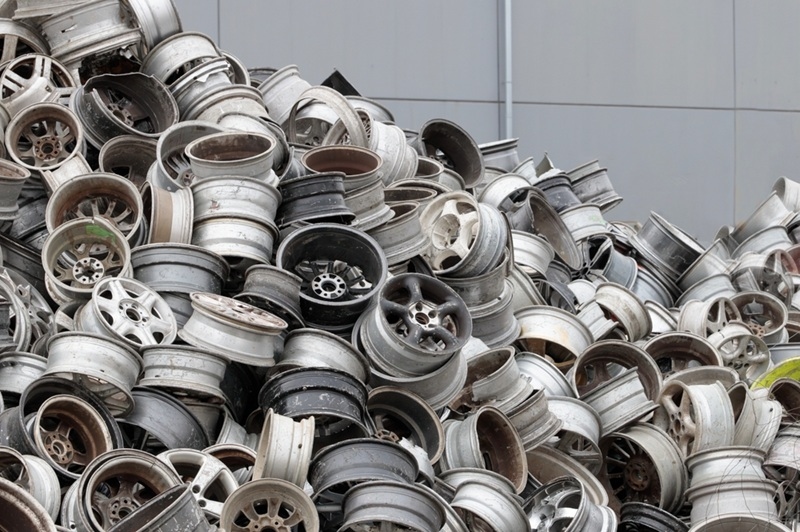
The automobile environment is evolving. The issue of climate change, pollution, and the resources we use is more aware than ever. The movement in the automaker is to be environmentally friendly and manufacture environmentally friendly cars, and production techniques are eco-friendly. This change is not only concerned with the construction of electric cars but also with the proper utilization of materials, less waste, and reconsidering the whole process of car creation. This blog will discuss the effect of eco-friendly practices on the automotive industry, on the trends and innovations that will be most important in 2025.
The motor industry is at a crossroads. A good number of automotive firms are gravitating towards clean and green solutions. This changes the manufacturing of the cars, the materials applied, and even the recycling of cars once they have finished their life cycle.
Sustainable auto manufacturing has become the focus of many big car manufacturers. These are cutting factory emissions, turning to renewable energy, and creating cars that could be recycled more easily. This demonstrates a definite involvement in environmental safety and a reaction to client demand for more environmentally-friendly vehicles.
Electric cars are not a fad; they are a fundamental part of the automotive industry trends 2025. Automakers invest much in electric models, and they emit zero tailpipe emissions. Another opportunity that is provided by electric cars is to reconsider materials and production processes in a more environmentally friendly manner.
The current automobile customers are concerned with sustainability. A large number of consumers make their decisions based on brands that demonstrate definite environmental responsibility. This change is prompting automakers to embrace greener approaches beyond using recycled materials to designing vehicles that can last longer and have a smaller carbon footprint.
There is more to sustainable auto manufacturing than making electric cars. It entails all the processes of car manufacturing, such as the design and assembly.
Automakers are increasingly using solar, wind, and other renewable energy sources in their plants. This reduces greenhouse gas emissions and helps factories run more efficiently. Some companies have already reached near-zero emissions in parts of their production processes.
Modern factories are focusing on reducing waste. This includes using less water, minimizing scrap materials, and reusing leftover parts whenever possible. Lean manufacturing techniques also help by creating more efficient workflows that waste less energy and materials.
Even car paints and chemicals are becoming greener. Water-based paints and non-toxic coatings are replacing traditional chemicals that harm the environment. This reduces pollution and makes the manufacturing process safer for workers.
Also read: EV Battery Chemistry Advances 2025: Solid-State, LFP, etc.

Recycled materials play a big role in sustainable auto manufacturing. Using recycled plastics, fabrics can reduce the environmental impact of cars.
Aluminum, steel, and other metals are often recycled in modern cars. Using recycled metals reduces the need for mining, which is energy-intensive and harmful to the environment. It also helps automakers save on production costs while supporting eco-friendly practices.
Many car interiors now use recycled plastics and composites. Seats, dashboards, and panels can be made from post-consumer or post-industrial recycled materials. This approach not only lowers waste but also gives a second life to materials that would otherwise end up in landfills.
The circular economy is about designing products to last longer, be reused, and be recycled at the end of their life. This approach is now influencing the automotive world.
Cars are being designed to last longer and be easier to repair. Longer-lasting cars mean fewer vehicles are thrown away, which reduces waste. Modular designs also allow parts to be replaced or upgraded without discarding the entire vehicle.
Many automakers now focus on reusing parts from old cars. Engines, batteries, and electronics can often be refurbished and reused in new vehicles. This practice supports the circular economy and reduces the demand for new raw materials.
Suggested reading: Self-Driving Regulation 2025 – Explore New Rules and Impact
Technology is helping automakers go green in many ways. From production tools to smart systems in cars, technology plays a vital role in sustainability.
Robotics, 3D printing, and automated assembly lines reduce waste and energy use in factories. These technologies also allow manufacturers to create complex parts with less material and fewer errors.
Cars today come with systems that improve fuel efficiency and reduce emissions. Smart navigation, energy recovery systems, and lightweight materials all contribute to greener driving. These innovations align with the automotive industry trends 2025.
Various car manufacturers are entering into collaboration with other firms, governments, and other organizations to enforce sustainability.
Firms dealing with cars are collaborating with material manufacturers to come up with environmentally friendly substitutes. These are recycled plastics, plant-based fabrics, and sustainable metals. These solutions can be scaled more easily in the industry with collaboration efforts.
Incentives and more rigorous regulations are encouraging governments to practice sustainability. All of this, tax subsidies, grants, and emission standards, is leading automakers to greener operations. These are the policies that are causing some transformation in production and the design of vehicles.
Car manufacturers are part of the world's efforts to lower carbon footprints and encourage the use of the circular economy in automobiles. The exchange of knowledge, shared research, and industry standards can support the sustainability of all companies.
Consumers contribute significantly to the automotive industry. The adoption of environmentally friendly practices can be faster by choosing more environmentally friendly cars and endorsing environmentally friendly brands.
When people purchase electric or hybrid vehicles, they decrease the amount of emissions and encourage automakers with a sustainable focus. The need to use green cars contributes to the invention and dedication to greener technologies.
People are becoming more conscious of recycled car materials. Promoting the brands that work with recycled metals, plastics, and fabrics will promote even greater acceptance of these practices within the industry.
The other way that consumers may be involved in the circular economy is through maintenance and recycling of parts, as well as purchasing refurbished parts. This will minimize wastage and sustainability of the automotive system.
Explore more: Rising Oil Prices Hybrids Demand: Everything to Know
Automobile sustainability is changing the motor world. Eco-friendly operations are transforming the design, construction, and recycling of cars. Carmakers are moving toward green auto production, recycled materials in vehicles, and implementing principles of the circular economy of cars. There are consumers, technology, and government initiatives that contribute to this green transformation acceleration. According to automotive industry trends 2025, an electric future is only part of the picture, as the future is also smart, sustainable, and responsible. Through such initiatives, we can roll towards a cleaner, greener, and more sustainable automotive world in the future.
This content was created by AI